The famous Lacoste crocodile is one of the most iconic logos in sporty menswear, and it’s typically associated with polo shirts (as well as luxury, in that regard). So, as part of our Is It Worth It? series, we’ll talk about the history of the brand, the workmanship of the iconic polo, quality, value, and more, to determine if a Lacoste polo shirt is worth your hard-earned money or not!
- The History of Lacoste
- Lacoste Polo Shirt Review: Material & Quality
- Colorfastness and Color Range
- Collars on Lacoste Polo Shirts
- Buttons and Buttonholes
- Lacoste Crocodile Logo Detail
- Polo Shirt Construction
- Lacoste Polo Price Points
- Shirt Offerings
- How Does the Lacoste Original Polo Fit?
- How Does the Lacoste Paris Polo Fit?
- Pros of a Lacoste Polo Shirt
- Cons of a Lacoste Polo Shirt
- Our Verdict: Is the Lacoste Polo Shirt Worth It?
- Outfit Rundown
The History of Lacoste
Lacoste was founded in 1933 by the famous and quite successful tennis player René Lacoste and the French textile magnate André Gillier.
Earlier in the 1920s, Lacoste had developed his own tennis shirt, inspired by polo shirts. He had removed the long sleeves and the buttons and used the piqué material for his shirts. They actually used to wear tennis sweaters at that time, which is obviously way too hot.
René Lacoste’s nickname was “The Crocodile,” and so, it was just natural to choose the crocodile as his logo. Admittedly, it’s a strange nickname. Some people say he got it after betting a crocodile leather bag against winning a match. Others say it’s because he had a long nose. We don’t really know what it was.
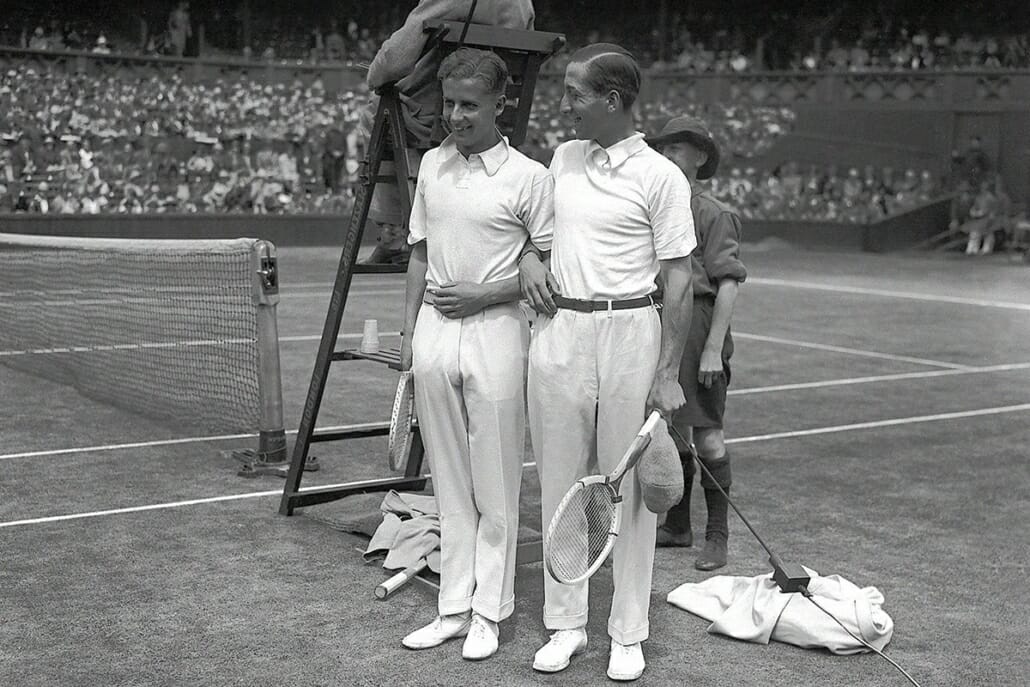
Before World War II, Lacoste tennis shirts or polo shirts were mostly sold to people in the tennis world or fans. It wasn’t until 1951 that Lacoste stripped the patterns of the shirts and introduced more colors to appeal to a wider, more general audience. At that time, the polo shirt competed with regular sports shirt as a staple item in a man’s wardrobe.
A year later, in 1952, Lacoste started cooperating with Izod to expand into the US market. The collaboration lasted until 1993. Still today, the name Izod is closely related to Lacoste in the US, even though now, Izod is a different, more mid-to-low market brand. Lacoste is its own thing, and they’re no longer connected. It definitely helped that famous people like Eisenhower wore polo shirts when playing golf.
From the 1960s through the ’80s, licensing deals were popular, and the brand expanded into leather goods, other sports garments, and stuff like cologne. Faced with stiff competition by the 1980s, Lacoste tried to lower the price, which worked for a short time. But, eventually, it led to Lacoste being perceived as a cheap brand, and it wasn’t good.
It wasn’t until the early 2000s when a new leadership reinvigorated the perception of luxury into Lacoste polo shirts, touting the rich history and bringing in some celebrity endorsements. Today, Lacoste is a big player in the polo shirt market, valued at around 2.3 billion US dollars. Even though they sell a bunch of different things, front and center is definitely their polo shirt.
Most Lacoste polos are made from a piqué knit, but they also have jersey knits and a t-shirt style material. They’re almost made out of 100% cotton, and there are some blends. If you want to learn more about the best polo shirt materials, our guide has you covered.
Lacoste Polo Shirt Review: Material & Quality
For this review, we looked at seven different Lacoste polo shirts, and all of them were 100% cotton, which is fairly the standard for the brand, at least in the US. Cotton comes in a wide range of quality, so we explain it in-depth in our Cotton Explained guide.
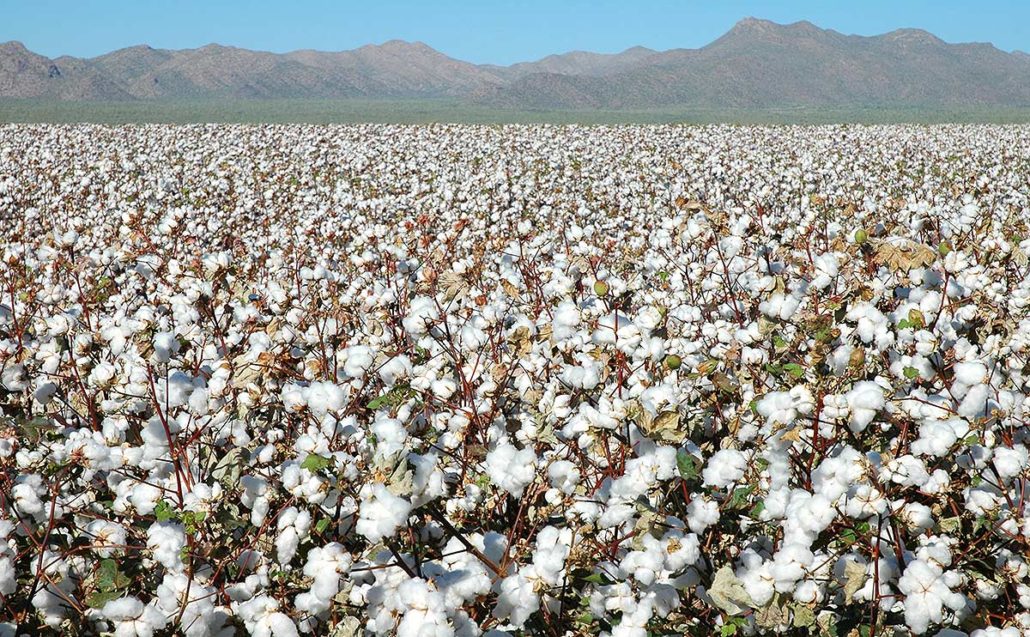
When we tried to find out what cotton Lacoste uses, we found out that it used one of the most resistant and flexible kinds of cotton on the market. Well, what does that mean? Actually, nothing. They don’t provide any information on the stapling of the cotton, the sourcing, or the harvesting, which would back up the claims they made.
Some Lacoste shirts explicitly state that they are made from Pima cotton, which is extra-long-staple cotton, which is good. Other shirts just say organic cotton or 100% cotton. And that, again, doesn’t mean that much.
Lacoste also heavily emphasizes their piqué cotton, which makes sense because it’s part of their history. Piqué is a knitted fabric that has a kind of waffle structure. It is not woven, which means it’s, generally, more flexible and has more stretch in all directions.
By the way, Germans distinguish between “stoff,” which is fabric, and “strick,” which is knit. In the English language, you can call a knitted material fabric and a woven material fabric. But, while a knitted material has a stretch in all ways, a woven material stretches in one way but not the 90-degree opposite angle. That’s just part of the technicality of a weave with warp and weft.
Lacoste employs a classic two-needle knitting approach to ensure they get the quality they want. They also claim to use long-staple cotton for the thread to make sure the whole polo stays together for the foreseeable future. Again, they don’t go into detail about the specific thread and how strong it is, and what they do. They make it more about the brand, not about the ingredients of the polo shirt.
Over the years, some people have claimed that Lacoste’s quality has gone downhill, and they call the piqué fabric too thin and flimsy, while others describe it as lightweight, breathable, and soft. In my mind, the piqué is definitely on the finer side. It doesn’t have these big open holes and doesn’t have as much texture as some other piqué fabrics do. I was surprised that even though it has a tighter knit, my chest hair still pokes through.
Then, they have their t-shirt material, which is basically like a regular t-shirt, just with a polo shirt collar and a rib on the sleeve, which frankly I don’t like that much. They also offer jersey polos, which is a different kind of knit, and we only had one shirt from their sport collection, which was cut roomier, and it definitely didn’t have as much flex as the piqué material.
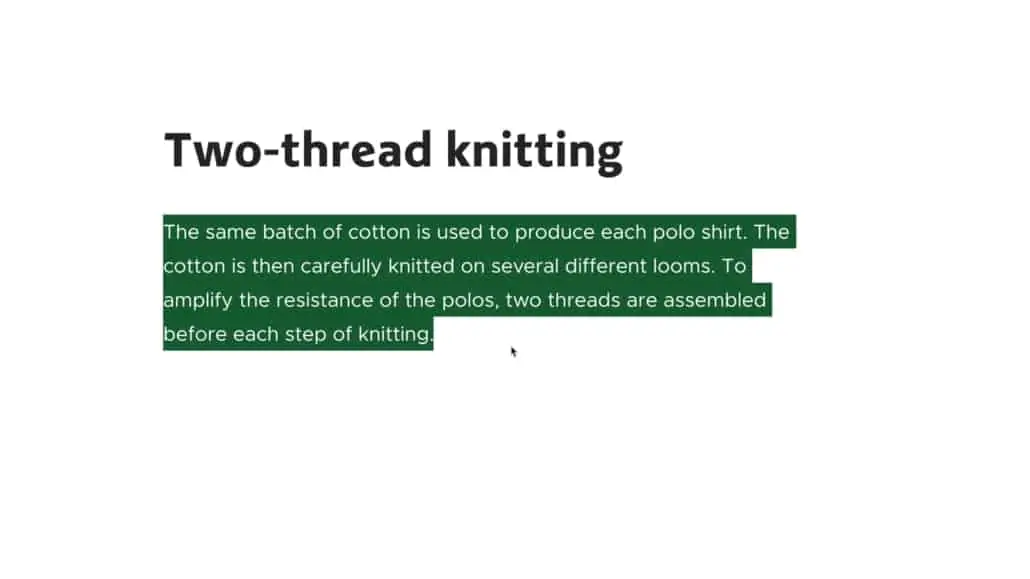
So, in terms of flexibility, the t-shirt is most flexible, then comes the piqué, and then comes your jersey. In terms of construction, Lacoste emphasizes that they try to be consistent by using the same kind of cotton for entire batches. So, you always end up with a similar, comparable result, and you can go back and buy a new Lacoste polo shirt, trusting that it feels like the one you bought before.
Colorfastness and Color Range
Lacoste is big into their colors, and so, they dye everything at once, ensuring that it’s consistent. And they also have light testing to make sure your colors don’t fade prematurely. I mean, eventually, if you take a bright color and leave it in the sun all day, every day, it will certainly fade on a cotton knit material. But, overall, I think Lacoste keeps their color rather well.
Their color range is one of the huge advantages of Lacoste. They offer more than 40 colors. And now, you could say, “Well, Ralph Lauren offers over 60 colors.” And while that is true, I find the Lacoste polo shirt colors more appealing because they include more pastel colors, and they’re just a bit less bold.
Don’t get me wrong, you still can get plenty of bold colors from Lacoste, like an orange polo shirt, for example. But, they also offer these subtle tones where Ralph Lauren, maybe, just has a subtle pink and a subtle blue. But not a subtle green or subtle yellow.
Lacoste also has options in beige or brown, or gray. And, I think, overall, they just nail their colors, and it seems like they’re always changing them, which some will be on sale and others won’t. But, maybe, you want a seafoam green or pale turquoise. That’s the color you’ll get from Lacoste.
Collars on Lacoste Polo Shirts
Most of their polo shirt collars are made from ribbed cotton. And we just had one polo shirt with a little crocodile print on them that had a slightly different color. And the jersey polo had a jersey collar. While these are the classic polo shirt collars that you can find on 95% of all polo shirts out there, I don’t like them very much because they curl very easily and just don’t stay as sharp and neat as actual collars made like a shirt collar out of the same piqué or jersey material.
Typically, that’s what higher-end brands offer, but I’ve also seen that from Uniqlo, for example, which is more of a $20 polo shirt. It features regular set-in sleeves, which are ribbed and finished with the same type of ribbed cut material that the cotton is made of.
Buttons and Buttonholes
Lacoste polos usually feature two buttons and two buttonholes. Interestingly, all the buttonholes, no matter how many, are cut horizontally instead of just the top collar buttonhole, which is more typical. This means it’s a little more difficult to get the button to line up exactly with a buttonhole, which speaks for their higher and precise sewing quality. At the same time, it’s a little more difficult to button the button if you actually want to do that.
However, they don’t offer a shank on the button, which would be a hallmark of a quality sewn-on button. Typically, you do that because, with two layers of fabric, if you button it, you get a little bit of wrinkling around that button if it doesn’t have the extra shank length.
The classic fit model that we bought retails at $95, and it has those two-hole, very characteristic Lacoste buttons that are actually made out of mother of pearl, which is nice. All the other six shirts we bought, which were not part of the classic fit, had only plastic buttons. Some of them had two holes, others four, and others even had the logo branded on the button.
Lacoste offers their polo in a classic fit, a slimmer regular fit, and an even slimmer slim fit. The regular fit retails for $89.50 and has just four old buttons in plastic, the slim fit also retails for $95 and has a two-hole button just like the classic one, but they’re plastic.
Lacoste Crocodile Logo Detail
When it comes to the famous logo, it’s fairly consistent across the range, and Lacoste claims they have over 1200 stitches in it. It’s obviously machine-made and not hand-embroidered. The logo was mostly green with a white edge and a red tongue, and some black contrasting thread.
The logo is about 1 and ⅛ of an inch wide and about ⅝ of an inch tall. That’s about 2.8 centimeters by 1.5 centimeters. Interestingly, the regular fit, t-shirt material polo shirt that we had here had a slightly smaller logo measured around one inch by half an inch or roughly 2.5 centimeters by 1.3 centimeters. But, if you look at them side by side, you can see that one is clearly smaller. I don’t know if that’s part of the style or made in a different factory. But, I thought it was noteworthy for a company that pays so much attention to their branding.
Polo Shirt Construction
In terms of construction, the stitch density of the Lacoste polo shirt is about 12 stitches per inch or about one stitch per two millimeters, which isn’t super high. But, I’m wondering whether, with the material like the piqué knit having too many stitches, it may actually weaken the material rather than strengthening it.
It may be a bit like leather, where a super high-stitch density actually makes the material more porous and more likely to rip. I’m saying that because, typically, in a higher-end shirt, you see at least 20 stitches for an inch. Overall, the stitching is very straight, consistent, and neat.
The greatest variety between the shirts was visible at the side seam at the bottom hem. The t-shirt fabric was hemmed flat like a typical t-shirt. The Made-in-France polo had a deep upside down v-cut that was enhanced by red contrast stitching on navy. When you use a strong contrast thread, every sewing imperfection becomes immediately visible.
The other shirts had various shapes of inverted v’s; some were rounder, some were more pointy, some were longer, some were shorter. And, again, I wonder if that has to do with different factories where they’re made at.
Lacoste Polo Price Points
If you just look at their retail price, $89.50 is their lowest retail price for a regular fit. But, you can get them on sale in their boutiques or their online shop, or at places like Amazon. Just make sure you don’t buy from a third-party vendor because Lacoste polo shirts are definitely faked.
For example, the regular shirt I got for just $53, the classic I got for $55, and a slim fit for $61. Their special knit with the stripe retail at $98. I got it for $54. Their Paris polo with a hidden fly retails for $110. I got mine for $66. Their croc print or comparable, more out-there polo shirts retail for $135. I got mine for $75. Their Made-in-France polo retails at $175, and I got mine for $103. Lacoste offers both short sleeve and long sleeve polo shirts, which is a good thing in my mind.
They have two main styles, the original and the Paris. The original comes in the classic fit, regular fit, and slim fit. The Paris comes in a classic and regular fit.
The original Lacoste polo shirt is also known under the abbreviation, internally, as L.12.12. The L stands for Lacoste, the first 1 for the piqué fabric. The first 2 stands for the short sleeves and the 12 at the end stands for the successful prototype.
Again, only the classic comes with mother of pearl buttons with two holes. The collar is slightly bigger than the Paris polo but fairly classic. The collar is ribbed just like the armbands, and it’s made of piqué cotton, and it’s just their typical classic style.
Shirt Offerings
Lacoste has a range of shirts, but we just look at the polo shirts under the aspect of casual wear, not how they perform on the tennis court. Unless, of course, you want to see me or Kyle go toe-to-toe with a tennis match on the court. Tell us in the comments.
Apart from the original and Paris polos, Lacoste offers a range of different collections, and they even have stuff like the National Geographic polo. They really have everything from standard stripes, solid geometric patterns, diagonals, prints, and animal patterns.
Personally, I like to stick to the classics, the solid looks, and the stripes. I’m not a big fan of their little logo-printed polos. But, if you can pull off the National Geographic polo, all the more power to you.
They also offer a sport polo, which was obviously cut the widest, had the longest sleeves. But, overall, I’d much rather prefer the original fit or Paris polo in a classic or a slim or regular fit to the sport polo. It just felt too baggy for me.
How Does the Lacoste Original Polo Fit?
In our experience, it runs, overall, quite small for American size. That being said, there are differences between the sizes. In terms of length, the classic is longer than the regular, which is longer than the slim.
All the polo shirts I got were a size 6, which corresponds to an extra-large. And, typically, I go for a large, but I checked their size guide and size 6 or extra-large was supposedly the right size. When I got them, they fit, and I think their XL or size 6 is the right size for me.
All the Lacoste polos we got had the same length in the front and back, which is not always typical. Many polo shirt brands have a longer back than the front, which makes it better for tucking in, so it doesn’t come undone.
Many people have complained that Lacoste poles are short. So, we compared them to other polo shirts. I used a size medium from Ralph Lauren, and you can clearly see that that’s quite a bit longer, especially in the back than the extra-large, which is two sizes up in Lacoste.
We also compared a Uniqlo polo shirt in size L, which is one size down from the extra-large on Lacoste, but it had the same length.
So, yes, Lacoste polos run shorter in general. And if you have a long torso or you like longer polos, it may not be the best brand for you. I’m about 6’1″ tall or 184 centimeters, and I weigh about 210 pounds or about 95 kilograms.
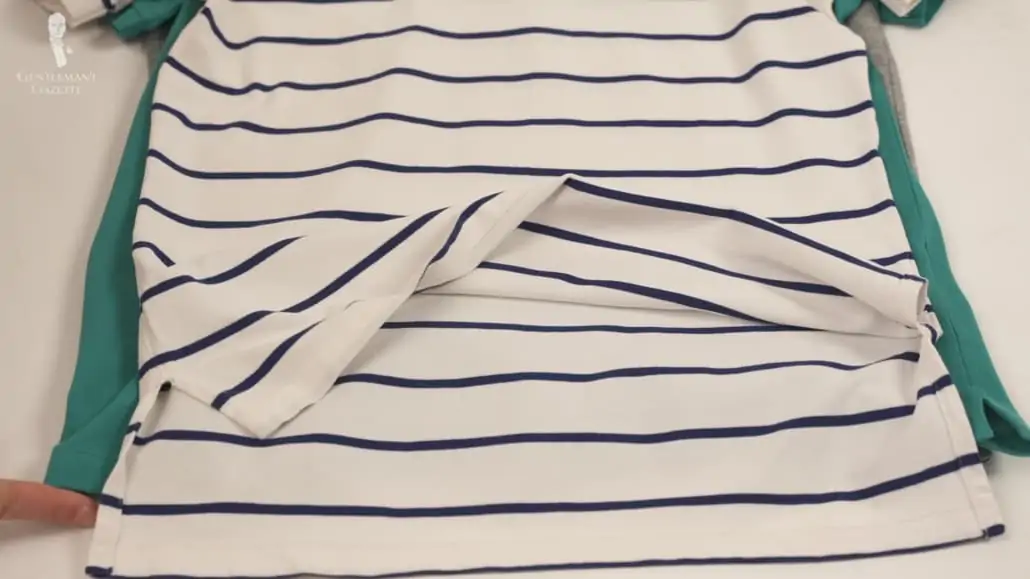
The classic polo is cut straight. It’s a bit looser but not baggy by any means. The sleeves are not so big that they’re flopping around. But they’re definitely longer than the other fits, but they still touch my biceps.
The fit is essentially a traditional look, and if you wear high-waisted pants the way I do, tucking it in should be no problem because there’s enough length there.
The slim fit has a more tapered cut overall. It has shorter sleeves and tighter sleeves. It’s tighter in the shoulders, tighter in the chest, waist, and seat. The fit is extremely popular with younger men, but it can be unforgiving if you choose your regular size and go in a slim because it’s really slim. I chose their extra-large, so I sized up and got slim. And I think it actually works just fine for me.
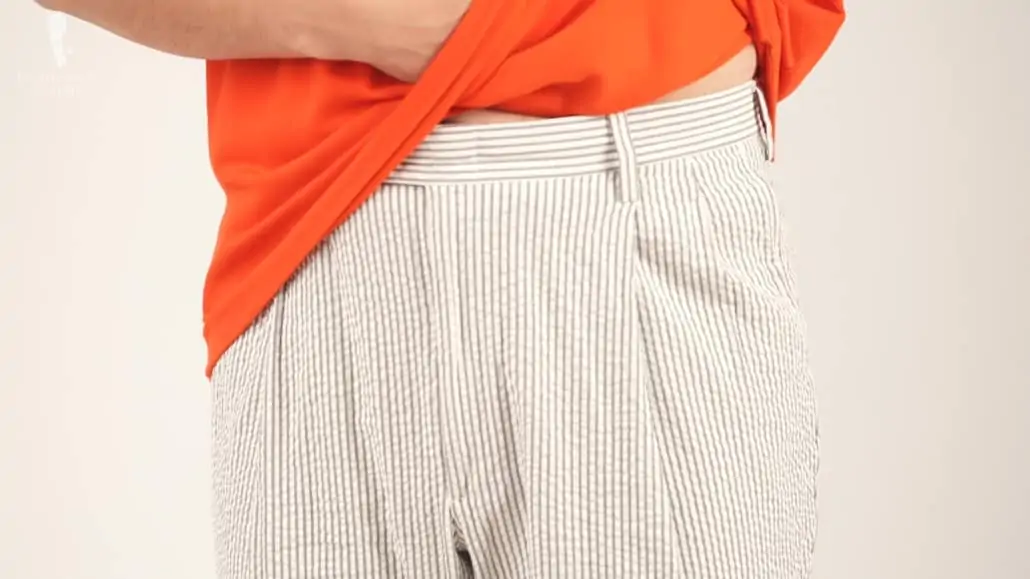
The regular fit is not available in all of their polo shirts, but it’s essentially between the slim fit and the classic fit. To learn more about how a polo shirt should fit, our guide has you covered!
Depending on the collection, Lacoste polos come between 7 and 10 sizes, which is quite a bit. Definitely check out their size guide, so you get something that fits you now.
How Does the Lacoste Paris Polo Fit?
The Paris polo comes in a classic fit and a regular fit. It’s different visually because it has a hidden front placket, so you don’t see the buttons, and the collar is definitely smaller. Also, the famous crocodile logo is tone-on-tone, so it’s a little more subdued. And, personally, I’d rather have no logos on my chest, so I’d rather wear the Paris polo than their original one.
People often associate the Paris polo with a younger look because it’s a little cleaner, and the collar is a little smaller, which is just a little more fashion-forward.
Where are Lacoste Polos Made?
They still have a factory in France. But, they also manufacture under a license. And of the other seven polos I bought, six were made in Peru, and only one was made in France.
Pros of a Lacoste Polo Shirt
1. Lots of Options
A big pro is that Lacoste offers many styles, colors, patterns, and fits for their polo shirts. It’s definitely a polo shirt company.
2. Colors Don’t Fade Quickly
The colors also stand up well against fading. And they have a very sophisticated color range, including lots of pastels.
3. Consistent Workmanship
From what we can tell, their polo shirts are fairly consistent in terms of workmanship and material.
4. Easy To Obtain
They’re easy to find in retail stores, and you can order them online worldwide.
5. Quality Fabrics
Their piqué fabric is nice if you like something lighter and thinner. The jersey fabric is nice, too, and I believe they work really well for men who are on the shorter side and are on the slimmer side, too.
Cons of a Lacoste Polo Shirt
1. The Sizing Runs Small
If you’re a bigger gentleman, you may have a hard time finding the right size for you.
2. They Also Run Short
Another negative aspect is they run a little short across the board. So, if you are taller, you have a long torso, you’ll probably have a hard time finding a polo shirt that works well for you.
Because of that, it’s harder to have them remain tucked in if you wear pants below your waist level, more on your hips. If you like trousers or pants or shorts with a traditional higher rise, you won’t have a problem.
3. Ribbed Collar
Another con in my book is the ribbed collar, and, yes, I know it’s fairly standard. But, if you charge more, I expect a higher quality shirt-style collar or, at least, give me the option in one of your shirts.
4. Lacoste Charges Luxury Prices
Another con is that Lacoste wants to be a luxury brand, and you definitely pay a markup for that branding.
5. Plastic Buttons
I also really don’t like that they use plastic buttons for everything other than the original polo and the classic fit. In my mind, it just cheapens the overall brand.
Our Verdict: Is the Lacoste Polo Shirt Worth It?
First of all, figure out what you want out of your polo shirt. If you just want something to wear while doing your garden work or run around the house, maybe spending the extra money on the Lacoste branding is not justified. If you wear polo shirts regularly during the summer and enjoy wearing them, it can be a good contender.
The big questions, then, are: Does the polo fit you, or does it puddle weirdly? Or does it have weird wrinkles, and do you like the fit and the style, as well as the fabric they offer?
For example, if you have a longer torso and it just doesn’t look good on you, well, it doesn’t make sense, and it’s not worth your money.
Do you want a polo shirt in just the basic colors such as navy or, maybe, gray? Then, you can go with other brands. But, if you want those special, unusual colors, I think Lacoste is really good.
Also, are you okay with having logos on your clothing, or do you prefer not to have logos? For example, if I have logos on my clothing, I always feel like I’m a walking billboard, which is not something I aspire to.
If you look at other brands, such as Uniqlo, for example, they have polo shirts without any logos on them, and it costs $20. The trade-off is, of course, you know their fabrics are a bit rougher, they’re blended, and more performance fabrics, and they only have the basic colors, and I can’t get all the nuanced ones that Lacoste offers.
When it comes to brands, here at Gentleman’s Gazette, we, generally, don’t put too much value or emphasis on that, and we rather look at the quality and the value, which is the quality to price ratio.
Looking at it from that angle, Lacoste offers a polar shirt with thinner, lighter fabric, and if you like that, I think you get an above-average polo shirt. But, you also pay an above-average price. Frankly, that’s much better than some other brands, which, in our opinion, are much bigger rip-offs.
Yes, Lacoste has a markup. That happens pretty much with any other big brand. Ralph Lauren, for example, I would say, is the same thing. Get a more well-known brand, and you pay more than lower-end polo shirts. That’s just how it goes.
Are they super luxury polos with high-end Giza Egyptian cotton, hand-made buttonholes, and really nice collars? No, they’re not. They sit somewhere around the elevated above-average range, but they’re not the top-end luxurious polo shirt.
That being said, we understand that some men like to wear brands for various reasons. Some, maybe, like the brand recognition. Others feel like they’re participating in building the brand by wearing it. And Lacoste certainly has the history to boot.
So, in the end, I’d say Lacoste is worth it if you don’t have an overly long torso, you’re okay with their shorter lengths, you want some interesting colors, and you’re okay with having a crocodile logo on your chest, and you’re okay with having a ribbed collar.
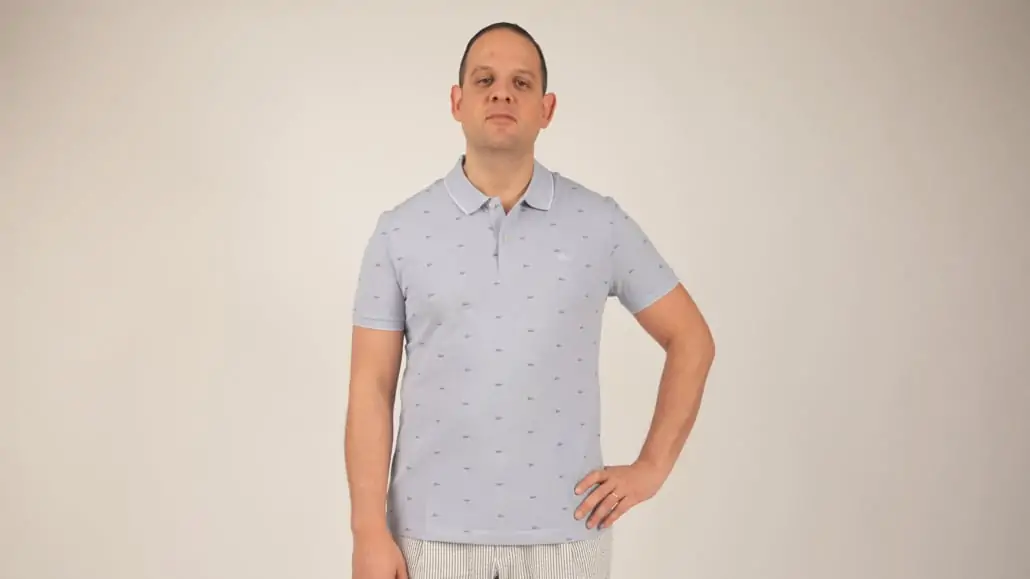
If you’re value-conscious, bear in mind that they regularly have sales with 40% to 50% off on their site and in other outlets, and at that price point, the value becomes much better, obviously.
Because of the prestige associated with their polos, there are lots of Lacoste rip-offs. So, buy from a licensed retailer, buy directly from their shops, their online store, or from places like Amazon, where you know that someone has a reputation to lose.
Outfit Rundown
I’m, of course, wearing a Lacoste polo shirt. It is a slim fit in size 6 or extra-large of their original polo line. I’m pairing it with a pair of blue and white checked seersucker shorts from Polo Ralph Lauren and a pair of Sperry gold cup boat shoes in a vibrant blue with white laces and tan accents. I finished the look with a pair of Persol sunglasses. They are the 3194S model. It’s kind of an aviator-type style in a brown. I just like the look of it.
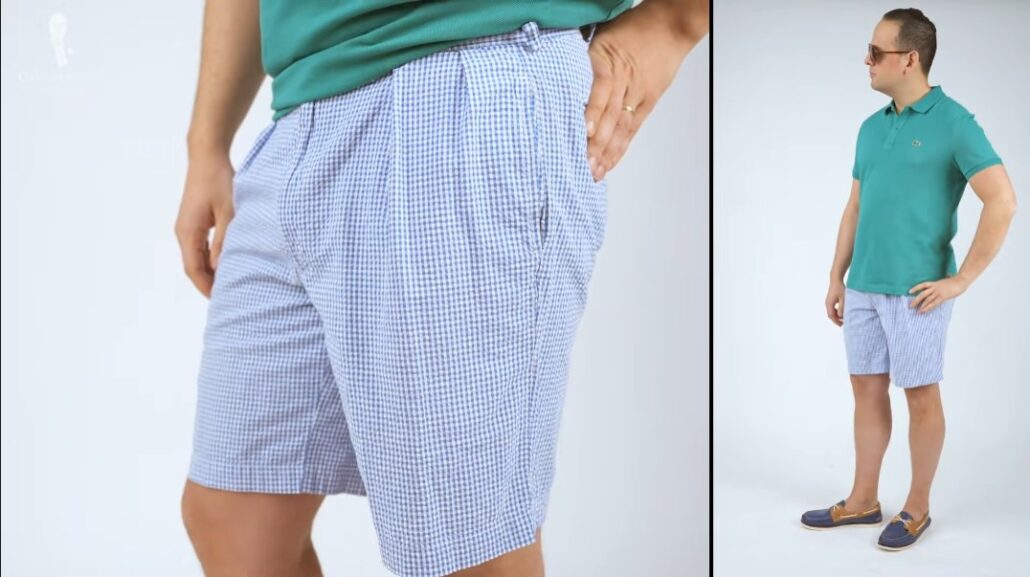
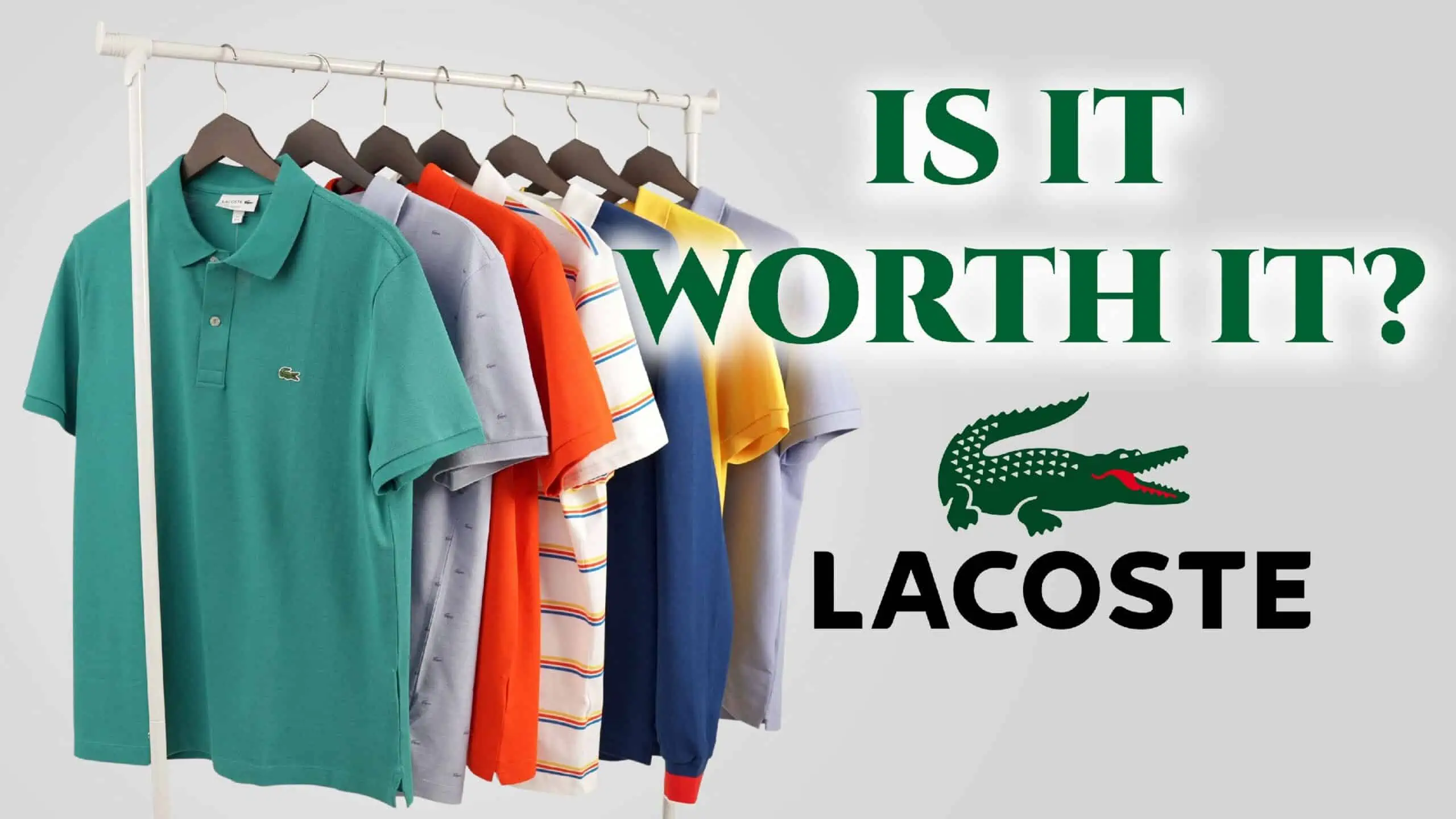
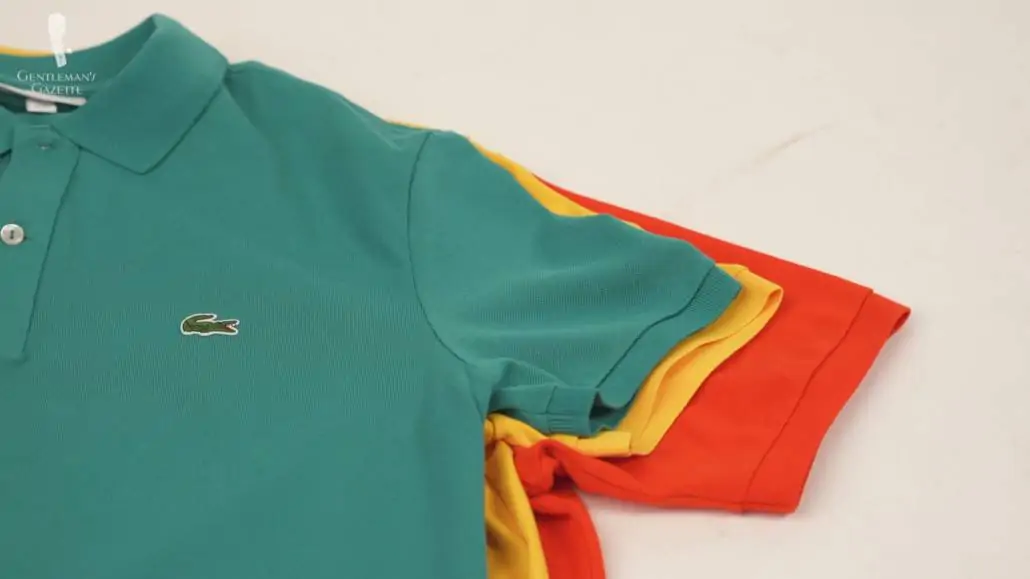
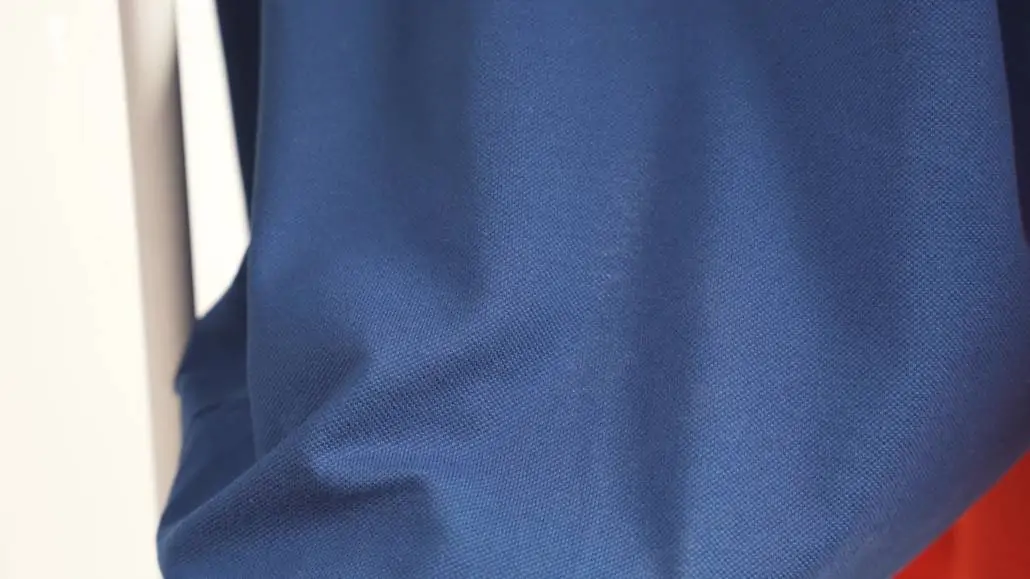
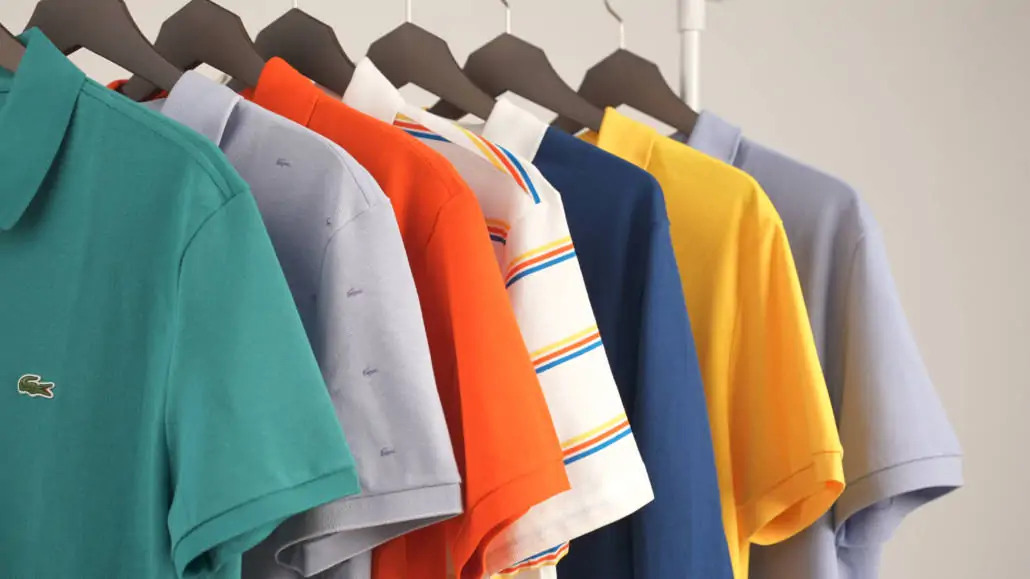
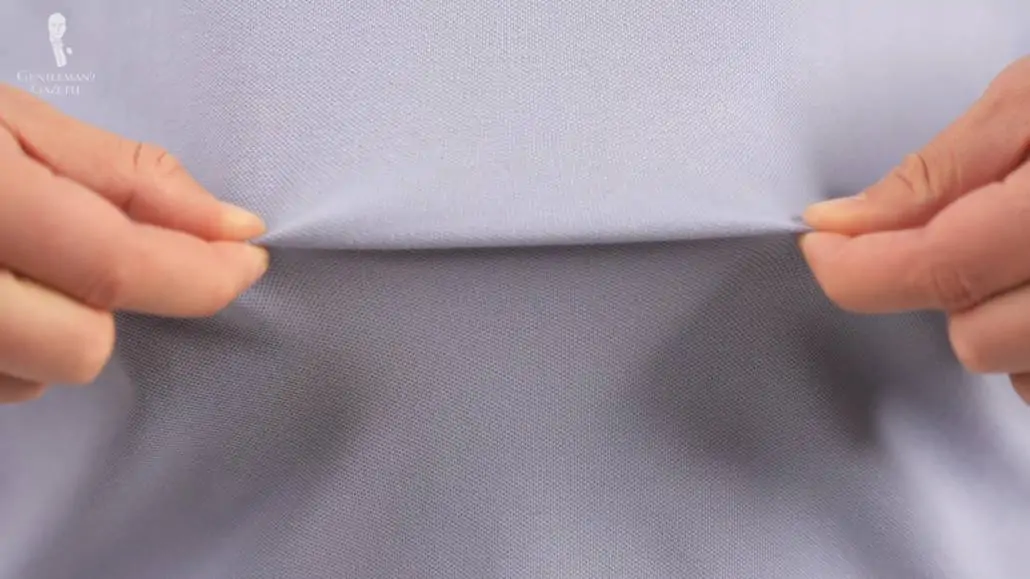
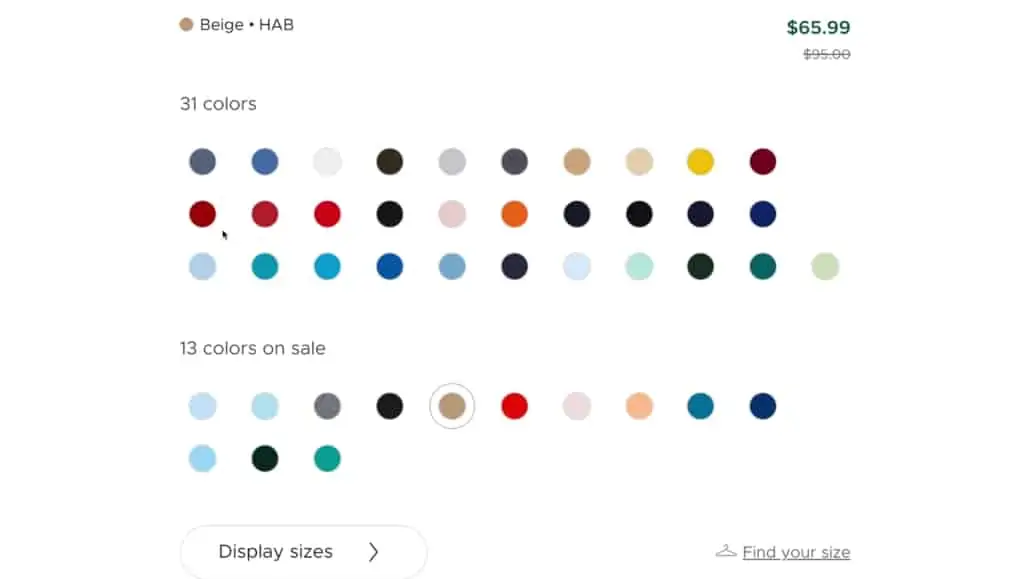
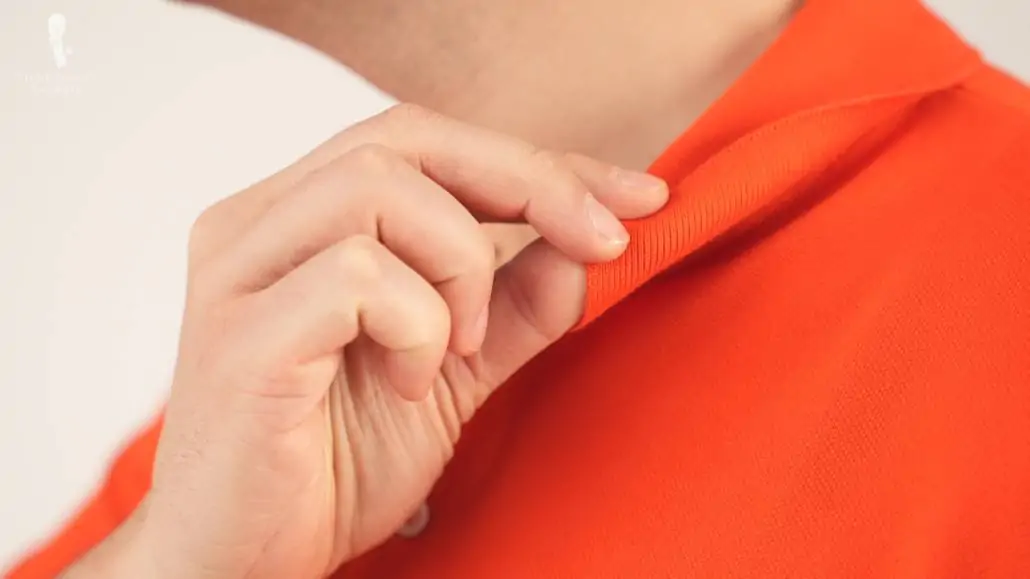
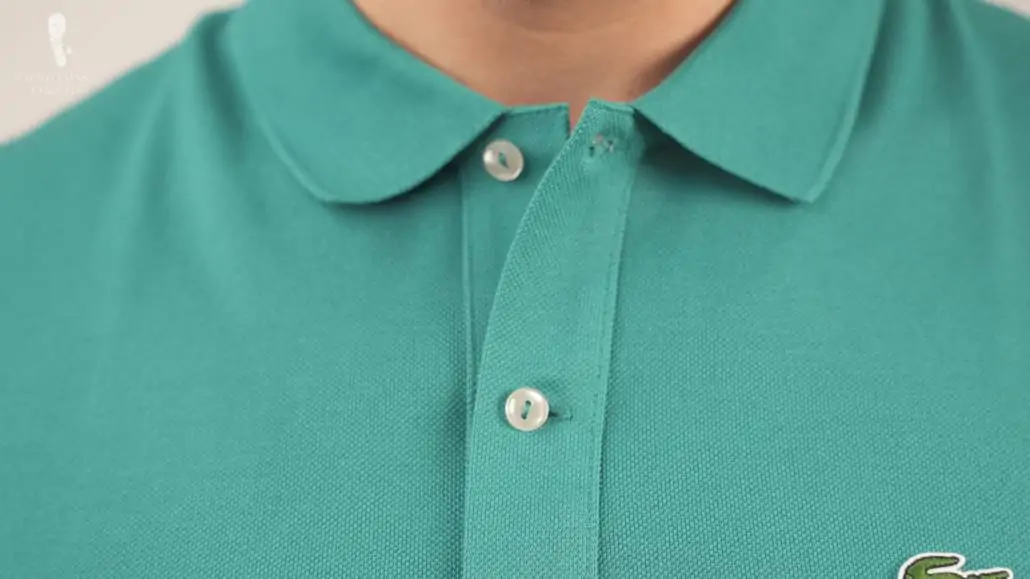
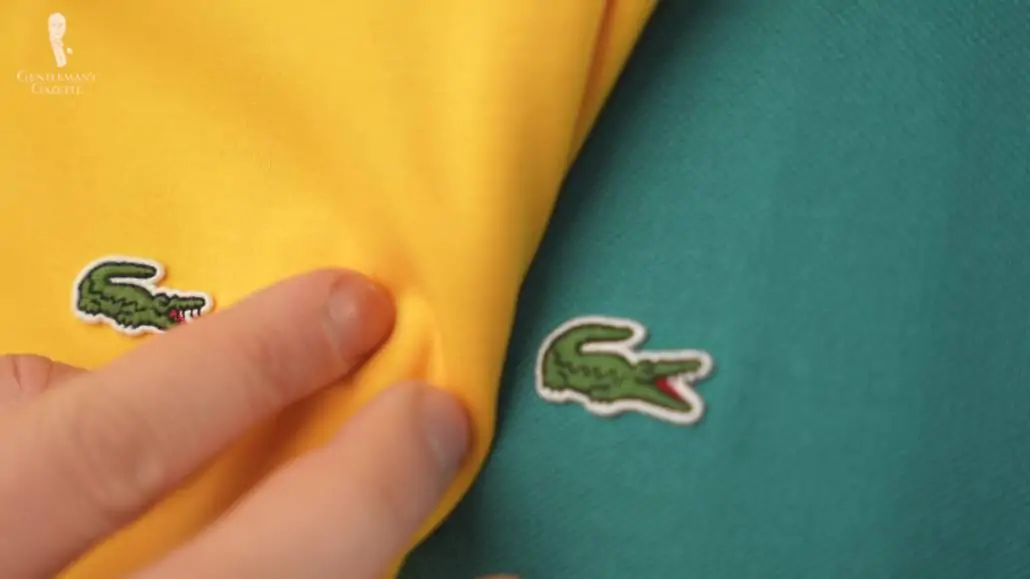
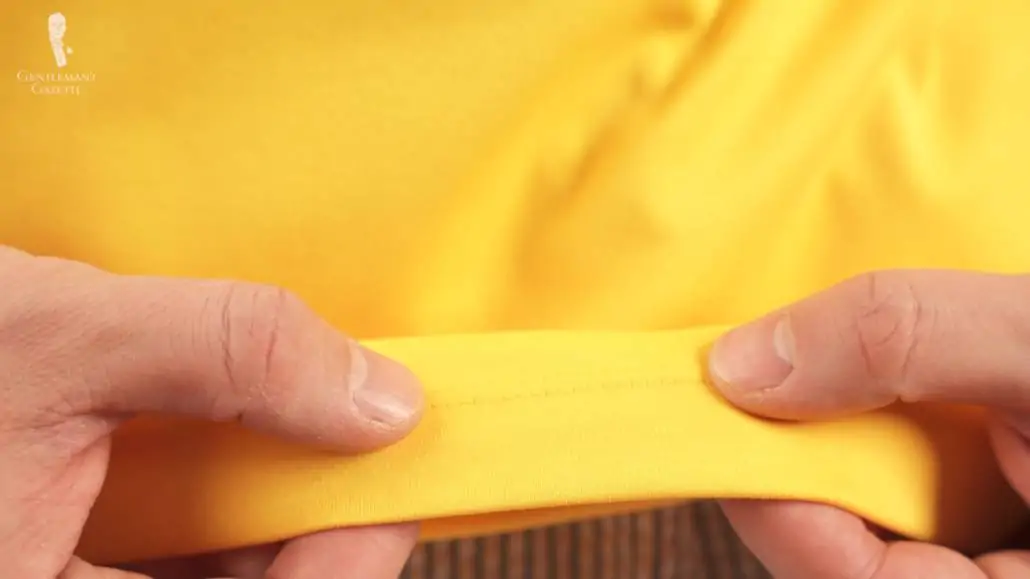
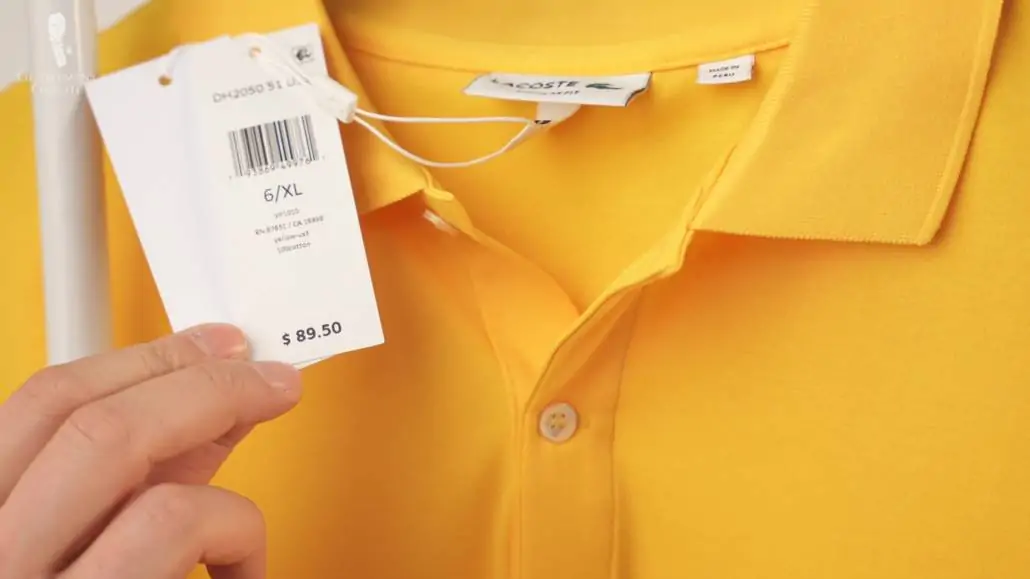
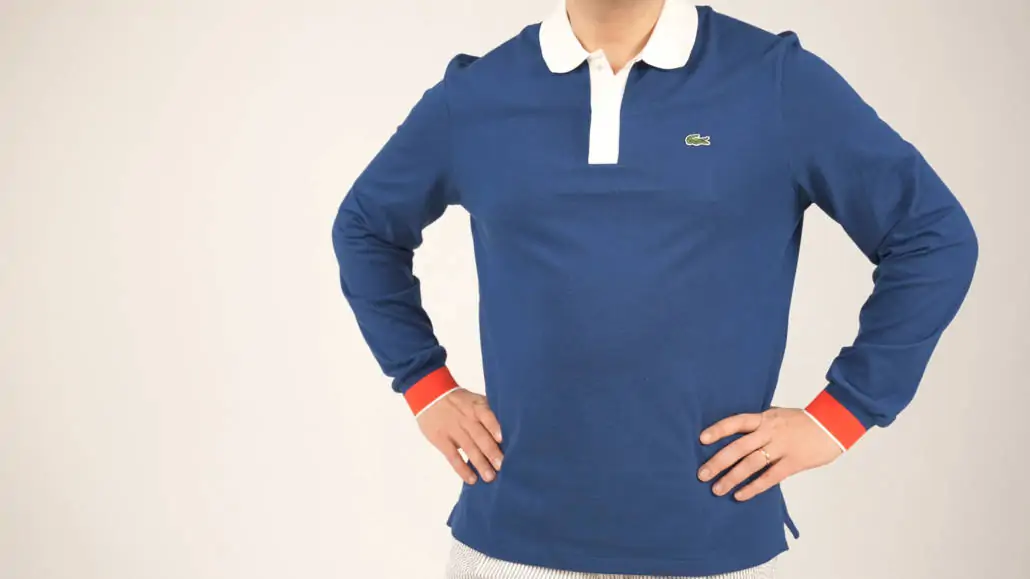
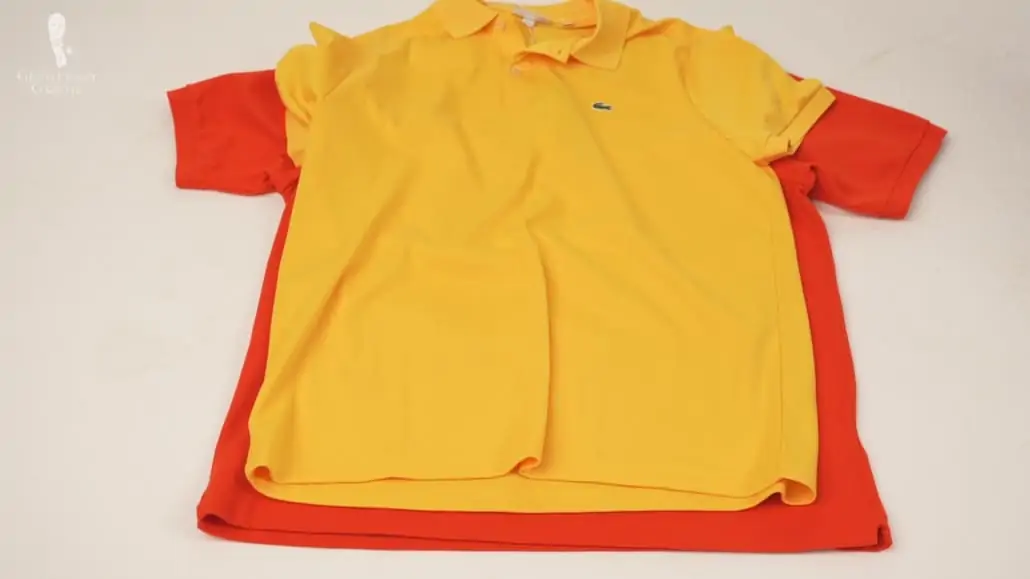
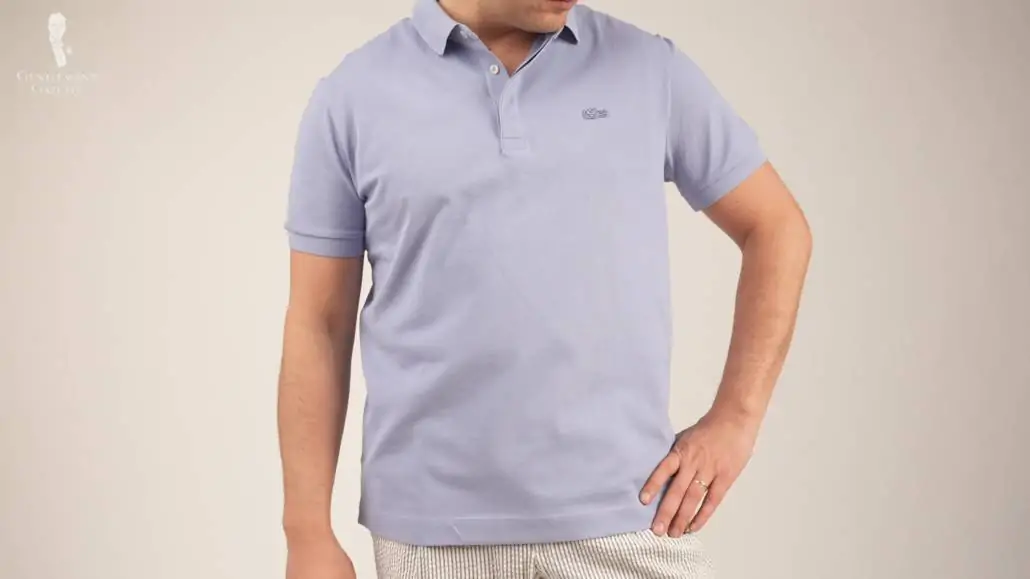
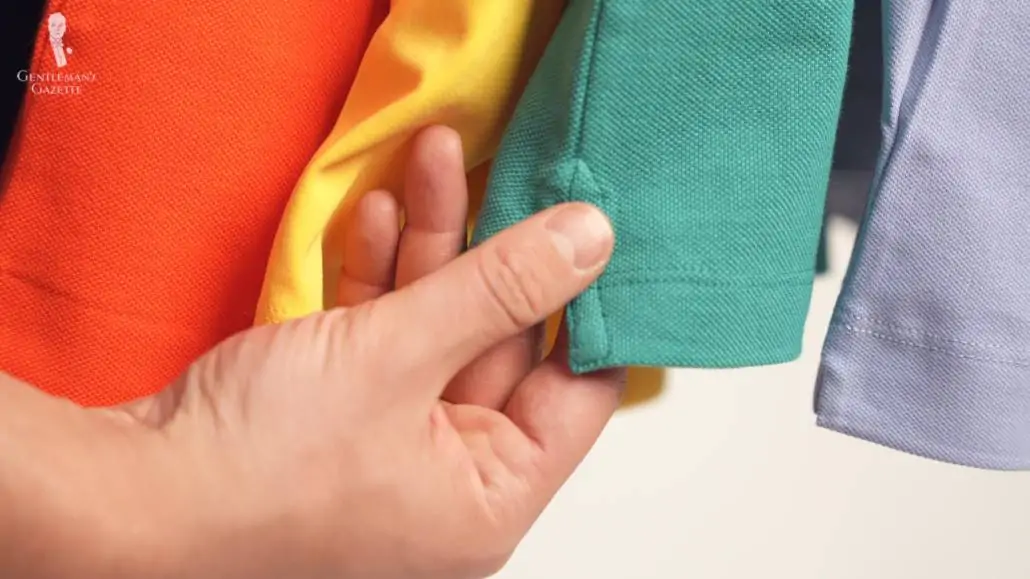
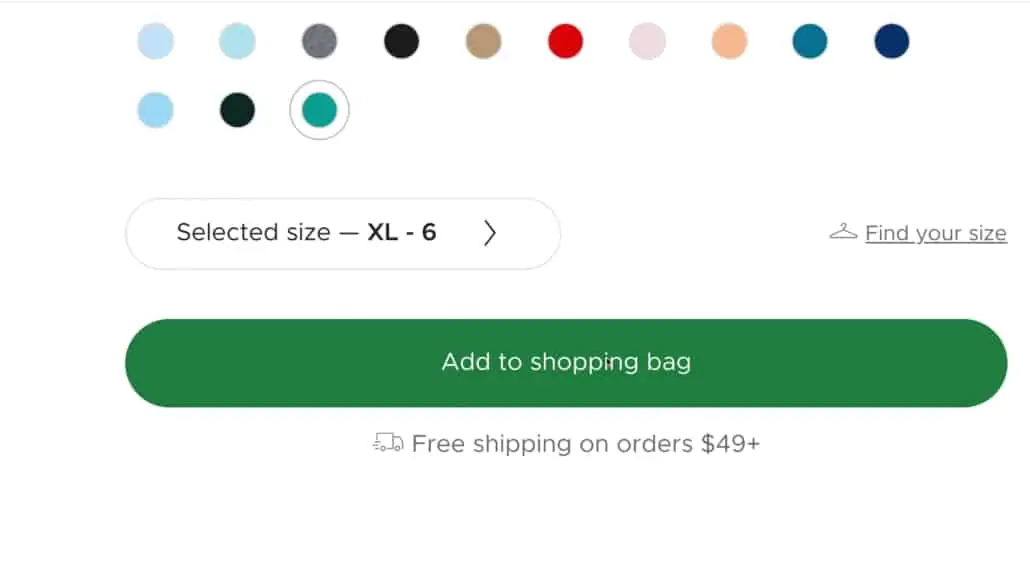
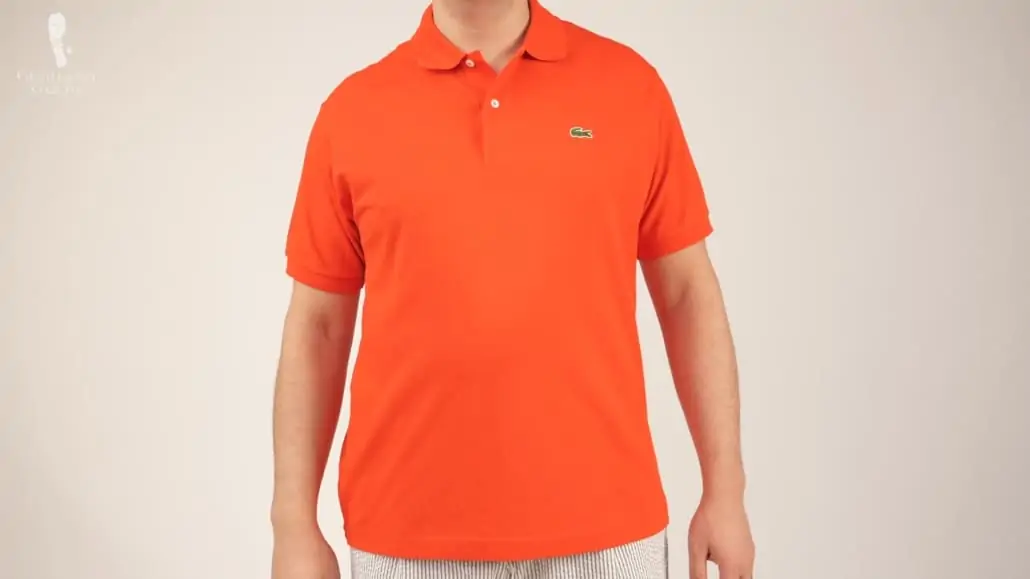
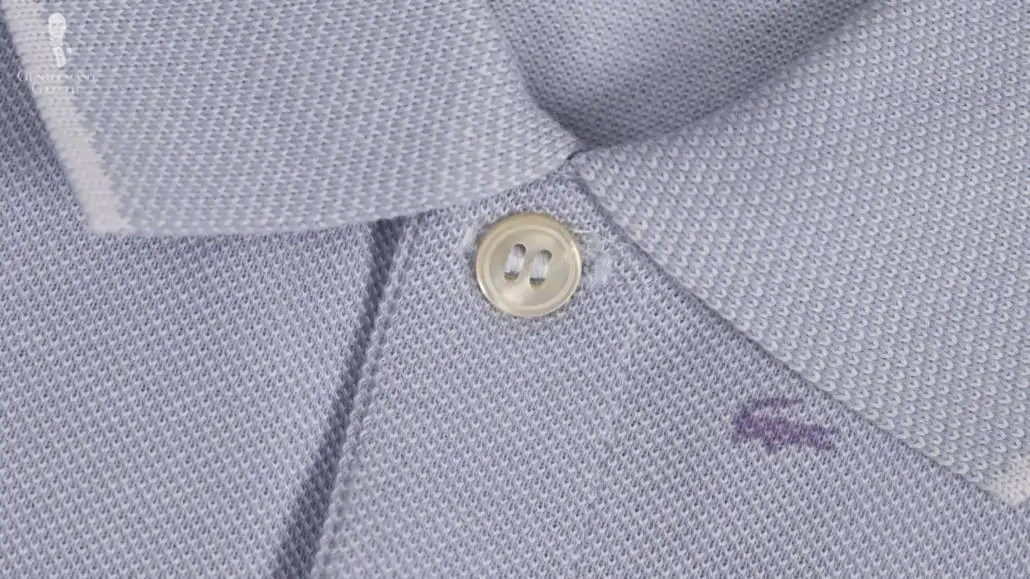
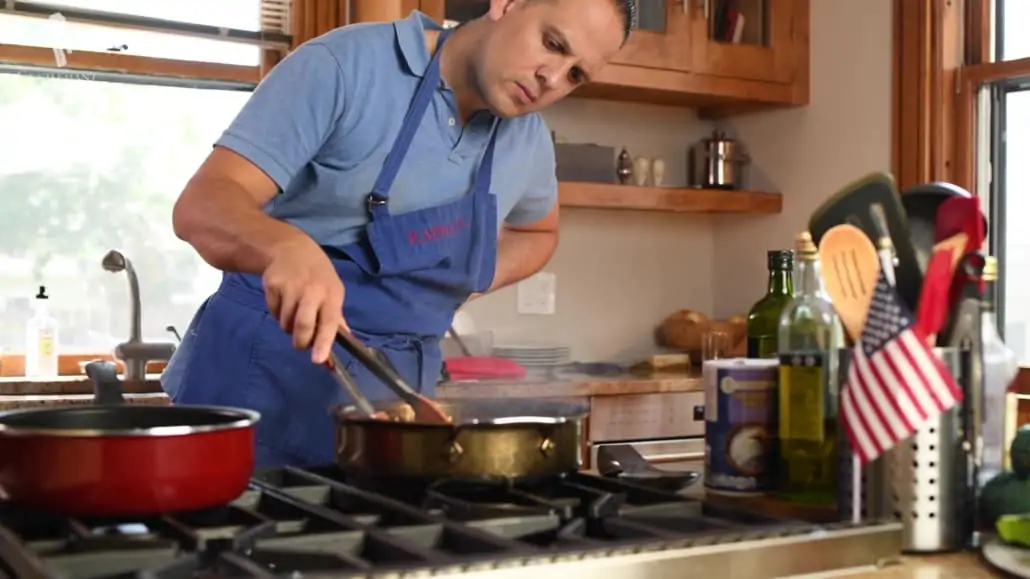
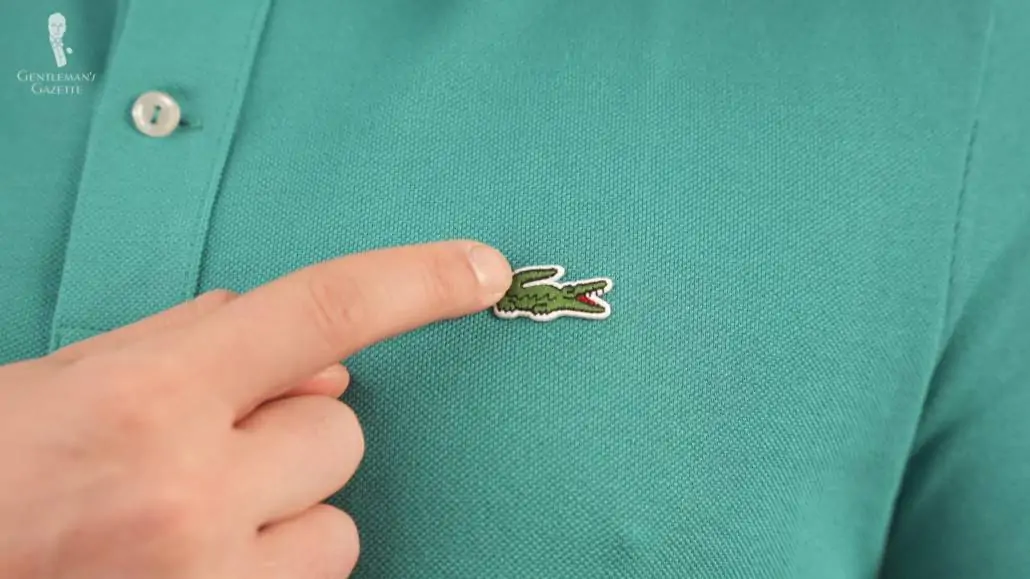
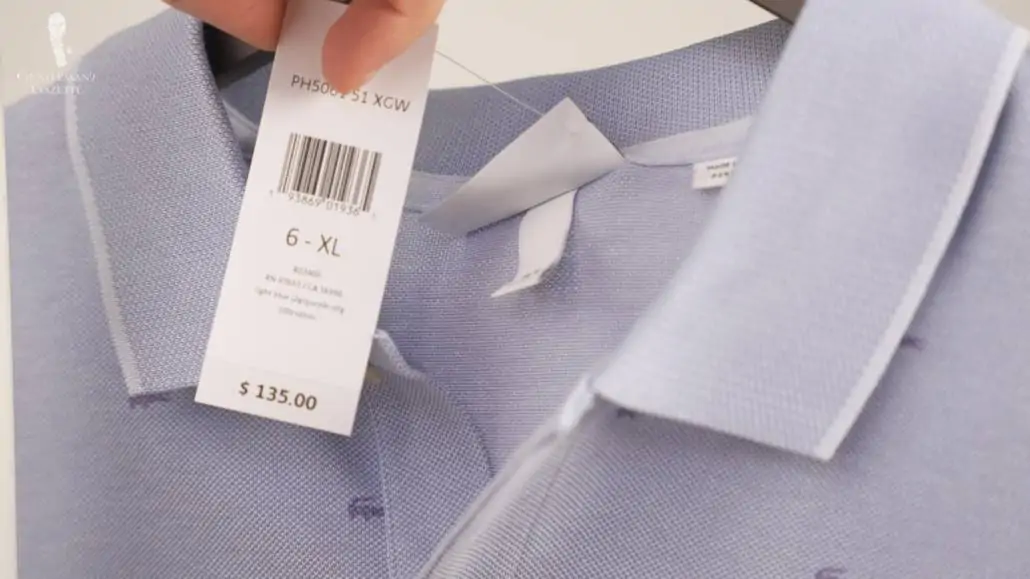
Nice and insightful review. Thanks. The tennis match could be great fun!
Yes, we have to film that, especially since neither of us ever had a tennis lesson.
Quote: “Another con is that Lacoste wants to be a luxury brand, and you definitely pay a markup for that branding.”
And yet they are made in Peru.
You can find very high quality stuff from Peru, including Vicuna, the most expensive material of all for clothing…Also keep in mind that Made in Germany was once associated with inferior products…
As usual, a thorough and objective review!
I’ve always liked them and mine have lasted and aged quite well.
An enjoyable read, but mostly for the memories it brings back. Lacoste was such a dominant brand at Wake Forest which I attended in the late 70’s . At the private high school I attended, Penguin shirts were de rigueur and when I reached graduate school, it was Ralph Lauren Polo. But in college, Lacoste was such a must-have. Now, however, I eschew logos and I’d never consider wearing a Lacoste polo.
You guys seem to have an unlimited supply of interesting and informative content. Great job and best wishes!
Great review! I love my Lacoste Polos, and wear them all the time. Overall they hold up and are worth the extra $$$ than others, and are a true classic.
As always, thoroughly insightful! For someone who’s worn Lacoste polo shirts for tennis and casual wear since 1958, the write-up is spot-on. Many thanks for the detailed analysis.
I have always liked Fred Perry.
Another hit article – I wasn’t especially interested in Lacoste but the explanations of fabrics, materials, and aesthetics were very edifying. Thanks, GG!
An informative and exciting article! Would love to see the tennis match!
I always remember parents buying us kids the ‘alligator tennis shirts’ growing up in Grosse Pointe in the 50’s. (No one called them “polo”). They were our t-shirts with a collar. Never went out of style, even though the parade of penguins, golden bears, polo players, and other assorted knock-offs came along. Some surviving, some not. Boy, are these expensive now, but still colorful and fun. I can’t begin to count how many old ones my family has made me throw away over the past 70 years.
I’m not particularly interested in Lacoste but the article is very educational for me. Thanks for all the detailed information.
Recently I’ve been wearing Paul Stuart polos and I’m very happy with them. I wear pique only, both short- and long-sleeved.
For years, I tried to convince myself that LL Bean and Lands’ End polo shirts were as good as Lacoste. I was wrong. The Lacoste shirts fit better, are more comfortable, the colors don’t fade, and the collars don’t curl. I only buy the classic fit and navy blue, and am perfectly satisfied.
Excellent article… which matches my own experience and opinion.
Oh, and I’d like to watch that epic tennis match (no tennis experience here either,lol…)
I only buy Lacoste, because they fit me very good. I have literally over 50 polo of them. Since i. Have so. Many they stay good for ever. I wash them inside out to preserve the colour, and if they are not dirty enough like most of the time i. Just throw them in the washing machine to rinse. Last but not least.. I. Only. Buy them when on sale.
Nice Artical GG,
I used to have a beautiful pastel pink polo and yellow Lacoste cardigan in the mid 1980’s,
Hey days of the British football casual era,we used to see the difference in the fakes by the red in the tounge and the black detail stitching on the logo,also the logo size would be a give away.
I didnt know about the mother of pearl buttons,interesting.
always wondered how they matched up….
Ralph(Original) vs Kyle(paris polo) semi-final : winner plays mother of pearl buttons Preston in the Final !
I started wearing Lacoste in the mid 80’s as that was one of the main brands on the football(soccer to you guys) scene in the UK.
The quality nowadays is vastly inferior to then and the collars are a pale imitation of the stiff collars which lasted a lifetime.
The likes of Barbour at way below Lacoste prices are much better value for money when it comes to the polo shirt.
However,I still like the Lacoste knitwear which is good value when in the Sales.
Lacoste was good up to mid nineties, when they were branded La Chemise Lacoste. The polo shirts (ironic that the brand was founded by a tennis player!) were high quality and washed well. In the UK they only had a couple of boutiques, one was in Knightsbridge. People like Paul Reuben got involved and the quality at the turn of the century was abysmal. Now they are rather too ubiquitous to be a luxury brand, with high prices, cheap labour, and high output. I still have a Chemise Lacoste, which reminds me of the days when Lacoste was a marque of quality.
I always wear Lacoste, I love it :)